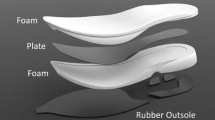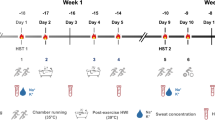Abstract
The purpose of this investigation was to estimate the efficiency of training with expanders and power trainers against changes in bone mineral density (BMD) during long-duration space missions. The same group of cosmonauts was tested in two different missions aboard the International Space Station. Resistive exercises using expanders and training equipment were done every other day as was recommended by Russian coaches. Settings of the treadmill and bicycle ergometer programs did not differ much in the missions. Preventive efficiency of resistive exercises was evaluated by the results of pre- and post-mission densitometry (Hologic Delphy) of the lumbar vertebrae (L1–L4), femoral neck, and greater trochanter. It was shown that the use of power trainers is explicitly more effective in BMD loss prevention than expanders. In light of prospective exploration missions, it is an important result that suggests that mineral density in the lower part of the skeleton could be kept under control despite prolonged exposure to microgravity through daily resistive exercises using power trainers.



Similar content being viewed by others
REFERENCES
Oganov, V.S., Osteopenicheskii sindrom pri defitsite mekhanicheskoi nagruzke: Rukovodstvo po osteoporozu (Osteopenic Syndrome in the Presence of a Deficiency of Mechanical Load: Handbook on Osteoporosis), Benevolenskaya, L.N., Ed., Moscow, 2003, ch. 21, pp. 442–468.
Oganov, V.S., Skripnikova, I.A., Novikov, V.E., et al., Characteristics of local human skeleton responses to microgravity and drug treatment for osteoporosis in clinic, Hum. Physiol., 2014, vol. 40, no. 7, pp. 762–766.
Oganov, V.S., Kostnaya sistema, nevesomost’ i osteoporoz (Bone System, Weightlessness, and Osteoporosis), Moscow, 2003.
Oganov, V.S. and Grigor’ev, A.I., Mechanisms of human osteopenia and some peculiarities of bone metabolism in weightlessness conditions, Ross. Fiziol. Zh. im. I.M. Sechenova, 2012, vol. 98, no. 3, pp. 395–409.
Oganov, V.S., Kostnaya sistema, nevesomost’ i osteoporoz (Bone System, Weightlessness, and Osteoporosis), Voronezh, 2014, 2nd ed.
Smith, S.M., Heer, M.A., Shackelford, L.C., et al., Benefits for bone from resistance exercise and nutrition in long-duration spaceflight: evidence from biochemistry and densitometry, J. Bone Miner. Res., 2012, vol. 27, pp. 1896–1906. https://doi.org/10.1002/jbmr.1647
Fitts, R.H., Riley, D.R., and Widrick, J.J., Physiology of a microgravity environment invited review: microgravity and skeletal muscle, J. Appl. Physiol., 2000, vol. 89, pp. 823–839.
Oganov, V.S. and Bogomolov, V.V., The human skeletal system in weightlessness: A review of research data, hypotheses, and the possibility of predicting the state in long-term (Interplanetary) missions, Hum. Physiol., 2011, vol. 37, no. 7, pp. 768–776.
Vico, L., van Rietbergen, B., Vilayphiou, N., et al., Cortical and trabecular bone microstructure did not recover at weight-bearing skeletal sites and progressively deteriorated at non-weight-bearing sites during the year following International Space Station missions, J. Bone Miner. Res., 2017, vol. 32, no. 10, pp. 2010–2021. https://doi.org/10.1002/jbmr.3188
Vico, L., Collet, P., Guignandon, A., Lafage-Proust, M.H., et al., Effects of long-term microgravity exposure on cancellous and cortical weight-bearing bones of cosmonauts, Lancet, 2000, vol. 355, no. 9215, pp. 1607–1611.
Sibonga, J.D., Evan, H.J., Sung, H.G., et al., Recovery of spaceflight-induced bone loss: Bone mineral density after long-duration missions as fitted with an exponential function, Bone, 2007, vol. 41, pp. 973–978.
Simsek, M., Cetin, Z., Bilgen, T., Taskin, O., et al., Effects of hormone replacement therapy on bone mineral density in Turkish patients with or without COL1A1 Sp1 binding site polymorphism, J. Obstet. Gynaecol. Res., 2008, vol. 34, no. 1, pp. 73–77.
Doecke, J.D., Day, C.J., Stephens, A.S., et al., Association of functionally different RUNX2 P2 promoter alleles with BMD, J. Bone Miner. Res., 2006, vol. 21, no. 2, pp. 265–273.
Kukoba, T.B. and Fomina, E.V., Axial loading with various intensities during resistant training of cosmonauts as a countermeasure against hypogravitational disorders, Aviakosm. Ekol. Med., 2017, vol. 51, no. 1, pp. 18–24.
ACKNOWLEDGMENTS
We are grateful to the members of the ISS crews, crew doctors, and engineering staff of the Gagarin Cosmonauts Training Center for their contribution to the organization of the study.
Funding
This study was supported by the Russian Foundation for Basic Research grant no. 17-04-01826.
The surveys of cosmonauts who participated in expeditions to the ISS before 2009 were carried out within the framework of the basic topic 63.1, 65.1 of the Scientific Research Foundation of the Russian Academy of Sciences.
Author information
Authors and Affiliations
Corresponding author
Ethics declarations
Conflict of interests. The authors declare that they have no conflict of interest.
Statement of compliance with standards of research involving humans as subjects. All subjects signed an informed consent for participation in the experiment according to the Helsinki Declaration. Informed consent was obtained from all individual participants involved in the study.
Additional information
Translated by K. Lazarev
Rights and permissions
About this article
Cite this article
Kukoba, T.B., Novikov, V.E., Babich, D.R. et al. Preventive Efficiency of Resistive Exercises for the Bone System of Cosmonauts in Repeated Long-Duration Space Missions. Hum Physiol 45, 759–763 (2019). https://doi.org/10.1134/S0362119719070107
Received:
Published:
Issue Date:
DOI: https://doi.org/10.1134/S0362119719070107




